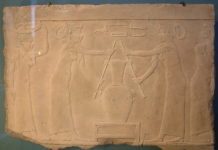
In military service for more than fifty years, the C96 Mauser Military Pistol ushered in the era of semi-automatic weapons on the modern battlefield.
In the history of modern weapons, the handgun is revered as both a badge of authority, replacing the sword officers carried for centuries, and as a close combat arm. The first handguns were carried as early as the renaissance era and remained single shot weapons until the 19th century. Revolvers came on the scene at the time of the Mexican- American war and were considered cutting edge, replacing single shot weapons for military service everywhere within twenty years. At the end of the century, with the stream era ushering in thoroughly modern way of thinking, ‘automatic’ pistols became fashionable. These pistols were fed via a magazine that could be reloaded rapidly and fired at a very high rate. Semi automatics on today’s battlefield are typified by the Beretta 92, Colt 1911 variants and Sig Sauer p226. These weapons owe direct lineage to the revolutionary designs that appeared in the 1890’s. One of the more interesting weapons of that period was the C96 ‘broomhandle’ military pistol produced by Mauser of Germany.
Invented by the three Feederle brothers in the factory workshop and placed into production in 1896, over one million of these weapons were made by the time the production ended in 1936. However unlicensed copies are still produced to this day. One of the most noteworthy aspects of this weapon is that it was the first successful automatic pistol to be put into production. It was also the first firearm to successfully use a rimless cartridge. The Mauser was designed to have its wooden holster clipped to the back of the handle to turn it from a handgun into a small rifle. With a muzzle velocity of nearly 1500~ feet per second and firing either a 7.63 x 25 mm or 9mm Parabellum round it was effective to fifty meters and was still dangerous up to a thousand.
Before World War one the handgun was sold via catalog mail order. In the early years of production the big relatively expensive Mauser pistol was not especially popular, and sales were poor. The gun was considered by many to be almost ‘too modern’. Eventually a following of young officers of several countries bought the weapon for personal use, eschewing the handgun issued by their country. A young Winston Churchill, while serving with the 4th Hussars purchased and maintained one of these German made pistols, which he later carried as a war correspondent. Freethinking officers in most modern armies often had one of these large semiautomatics at one time or another. After the outbreak of war in 1914, with a general rush to arm new troops, Mausers found use with the German Army who purchased some 150,000 to supplement their standard issue Luger P08 pistols. Later these weapons found limited use by the armies of Norway, Bolivia, China, Indonesia, Persia, and Turkey at one time or another. Even with all of this use, this arm was never adopted as the primary handgun of any armed force, always being relegated to special units or selected officers.
Mausers were purchased through Bolshevik agents operating out of Sweden in 1917 and supplied to many officers of the Cheka and Red Army. At least one of these weapons (serial no. 167177) was present at the infamous execution of Tsar Nicholas II and his family in Yekaterinburg. It is currently in the Yekaterinburg museum, donated by the owner who used it that night.
Chiang Kai-Shek, the leader of Chinese Nationalist Forces in the Sino Japanese War and foe of Mao Zedoung, carried a Mauser for several years publicly before Germany became involved as a Japanese ally. Many thousands of these pistols found their way to china during this time period and several are still thought to be used by auxiliary police and guard units to this day.
A very photogenic handgun, the Mauser found itself starring in supporting roles in dozens of Saturday serials and movies. It should also be noted that fictional smuggler Han Solo’s blaster in the original “Star Wars” (1977) science fiction epic was a modified 1896 Broomhandle.
From Winston Churchill to a Galaxy Far far away, the underdog Mauser has been a witness to some of the most important military history of the past one hundred years.







